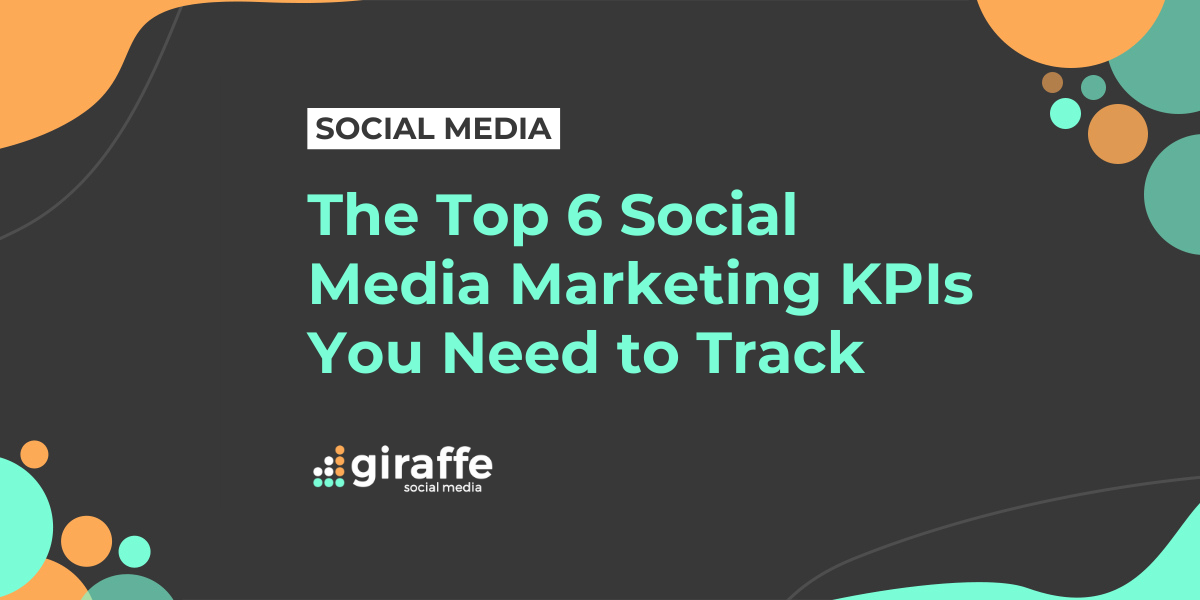In the early days of social media marketing, brands could build a following even with a quantity-over-quality approach. With the over-saturation of brands on social media, often across multiple channels at once, that is no longer the case. Now, there needs to be a method to the madness – a method shaped by your target audience, social media goals, and Key Performance Indicators (KPIs).
Social media marketing KPIs “help brands to understand how well their campaigns are performing and whether they might need to make changes to their strategy.” Consistently tracking KPIs over weeks, months, and years can showcase what’s working well for your brand and help inform future decisions. As the name suggests, they’re key indicators for performance!
If you’re new to social media marketing, starting up your business on social media, or are running new campaigns and you’re not sure where to start with reporting, don’t worry – we’re bringing you our top 6 KPIs to track for social media marketing. This includes metrics for both organic and paid social media, as a combination of these avenues is recommended for the widest, most targeted reach.
Our top 6 social media marketing KPIs that you need to be tracking:
1. Shares, Comments/Replies, Saves
2. Engagement Rate (ER)
3. Social Share of Voice (SSoV)
4. Return on Ad Spend (ROAS)
5. Conversion Rate (CV)
6. Issues Resolved
It’s one thing knowing what you should be tracking, but how and why are even more important. Your social media marketing strategy should be based on historical data or, if you don’t have any data yet, predictions and trends for your industry.
1. Shares, Comments/Replies, Saves
Associated goal: Engagement, Community Building
Type: Organic
Another set of engagement KPIs, shares, comments/replies, and saves are all valuable ways to track engagement on social media. Likes and follows don’t cut it for engagement, you need to be tracking actual interactions and indicators of valuable content.
Try to reply to every comment left on your posts to make commenters feel included and engage their emotions. Drop a DM to someone who shared your post on their story thanking them for the action and drum up a conversation. Keep track of who’s saving which posts and why – this could help you with content planning in the future.
2. Engagement Rate
Associated goal: Engagement
Type: Organic
Almost every business using social media marketing are interested in engagement rates in one way or another. The engagement rate of organic and paid posts/campaigns is essential to know for engagement goals on social media. According to Hootsuite, there are 6 main types of engagement rate calculations that can be tailored depending on platform and post type:
- Engagement Rate by Reach (ERR)
- Engagement Rate by Posts (ER post)
- Engagement Rate by Impressions (ER impressions)
- Daily Engagement Rate (Daily ER)
- Engagement Rate by Views (ER views)
- Factored Engagement Rate.
On Instagram, average engagement rates have fallen over the years, due in part to recent algorithm updates. Average engagement rates on Instagram in 2014 were around 4.2%, whereas in 2021 it’s fallen to 1.22% (down from 1.6% in 2020).
3. Social Share of Voice
Associated goal: Reach/Brand Awareness
Type: Paid
When “social listening meets competitive analysis,” you get Social Share of Voice (SSoV). SSoV is measured as a brand’s social media advertising activity across a product category, industry sector, or another relevant factor as a percentage of the total advertising activity in that segment. For example, “if Levi’s put out 30% of advertisements for jeans, that brand has a 30% SOV within the jeans product group.”
SSoV borrows its principles from market share of voice in traditional marketing. For businesses looking to grow on social media and within their industry, SSoV is an important KPI to track for paid social campaigns.
While SSoV can technically be calculated manually, that could be exhausting for larger industry segments. To track SSoV with ease, you’ll want access to social listening capabilities through a social analytics tool.
4. Return on Ad Spend (ROAS)
Associated goal: Revenue
Type: Paid
For all of your paid campaigns, you should be tracking their efficiency through Return on Ad Spend (ROAS). You can calculate ROAS using the following simple formula:
(Revenue derived from ad source / Cost of ad source) = ROAS
ROAS can be written as a percentage, ratio, or decimal number – whichever is easier to digest. It’s hugely beneficial to include ROAS when reporting on paid social campaigns, especially when reporting to key stakeholders and upper management to justify social media ad spend.
If a campaign is spending large amounts but barely returning sales, it indicates poor performance and the importance of optimisation. Similarly, high-ROAS campaigns can be investigated and learned from in terms of what made them so successful.
5. Conversion Rate
Associated goal: Conversions
Type: Organic and/or Paid
A social media conversion is “any action from a user of a social network that results in a desired action related to a defined goal.” This could be clicking a link to a landing page, signing up for a newsletter, generating a lead, or making a purchase. It all depends on your specific goals and desired outcomes.
A conversion rate is a percentage that refers to how many conversions you received from all link clicks, website visitors, etc, and can be calculated like so:
(Conversions / total visitors, clicks, etc) * 100 = Conversion Rate %
On Facebook and Instagram, you can set a paid ad/campaign’s objective to “conversions” to “drive valuable actions to your website,” enabled through Facebook Pixel. Conversion tracking is also available on Twitter ads, LinkedIn ads, YouTube ads, and more.
Conversions aren’t just for paid campaigns – you can track conversions for goals such as newsletter sign-ups by using a referral URL in social media posts to identify traffic and subsequent conversions that came from social media.
6. Issues Resolved
Associated goals: Customer Loyalty and Brand Health
Type: Organic
Brands using social media as a customer service tool will want to track Issues Resolved as a KPI. It gives your team insight into the efficiency of resolving reported issues and helps to monitor the health of the brand.
If you find, from tracking issues resolved, that your brand is getting a lot of complaints about a particular area/product/service, you can then escalate problems to different departments and fix the problem from the source. This will help regulate your social media customer service and reduce the amount of ‘fighting fires’ as problems arise.





